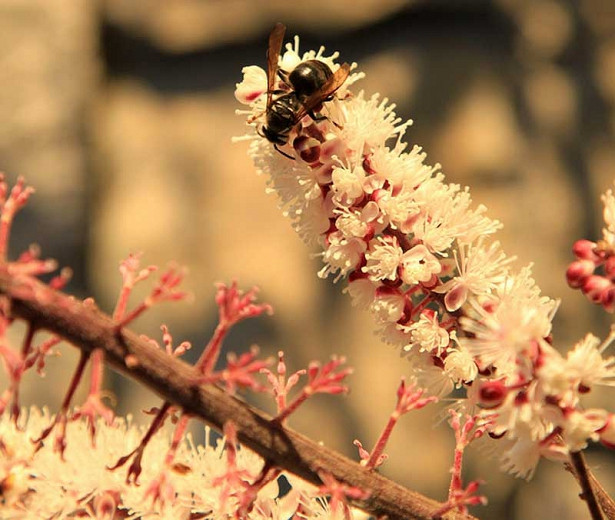Actaea pachypoda (White Baneberry)
Perfect for shade gardens, Actaea pachypoda (White Baneberry) is an herbaceous perennial forming a clump of finely divided, bright green foliage, enhanced by dense, globular clusters of small fluffy white flowers in late spring and early summer.
Perfect for shade gardens, Actaea pachypoda (White Baneberry) is an herbaceous perennial forming a clump of finely divided, bright green foliage, enhanced by dense, globular clusters of small fluffy white flowers in late spring and early summer. Borne on conspicuous red stems which rise above the foliage, they give way to pea-sized white berries in summer. Each berry has a small purple spot (doll's eyes). Highly toxic, they are ignored by wildlife and persist until frost, providing ornamental interest over a long season.
- Typically grows up to 18-30 in. tall (45-75 cm) and 24-36 in. wide (60-89 cm). Self-seeding may occur when the berries fall to the ground.
- Thrives in average, medium moisture, well-drained soils in part shade to full shade. Moist, moderately fertile soil, enriched with organic matter is preferred. Don't let the soil dry out.
- Trouble-free and easy to care for, Baneberry is a welcomed addition to beds, borders, woodlands, cottage gardens, and naturalized areas.
- Cut back after fruiting. Propagate by seed sown in pots in a cold frame in autumn or by division in early spring.
- The berries are extremely poisonous if eaten.
- Native to Eastern North America.
Requirements
| Hardiness | 3 – 9 |
|---|---|
| Heat Zones | 1 – 9 |
| Climate Zones | 1, 1A, 1B, 2, 2A, 2B, 3, 3A, 3B, 4, 5, 6, 7, 17 |
| Plant Type | Perennials |
| Plant Family | Actaea – Baneberries |
| Exposure | Partial Sun, Shade |
| Season of Interest | Spring (Late)Summer (Early,Mid,Late)Fall |
| Height | 1' – 3' (30cm – 90cm) |
| Spread | 2' – 3' (60cm – 90cm) |
| Spacing | 36″ (90cm) |
| Water Needs | Average |
| Maintenance | Low |
| Soil Type | Clay, Loam |
| Soil pH | Acid, Alkaline, Neutral |
| Soil Drainage | Moist but Well-Drained, Poorly Drained |
| Characteristics | Fragrant, Showy |
| Native Plants | United States, Midwest, Illinois, Indiana, Iowa, Kansas, Michigan, Minnesota, Missouri, Nebraska, Ohio, Wisconsin, Northeast, Connecticut, Delaware, Maine, Massachusetts, Maryland, New Hampshire, New Jersey, New York, Pennsylvania, Rhode Island, Vermont, Southeast, Alabama, Arkansas, Florida, Georgia, Kentucky, Louisiana, Mississippi, North Carolina, South Carolina, Tennessee, Virginia, West Virginia, Southwest, Oklahoma |
| Tolerance | Deer, Rabbit |
| Garden Uses | Beds and Borders |
| Garden Styles | Informal and Cottage |







